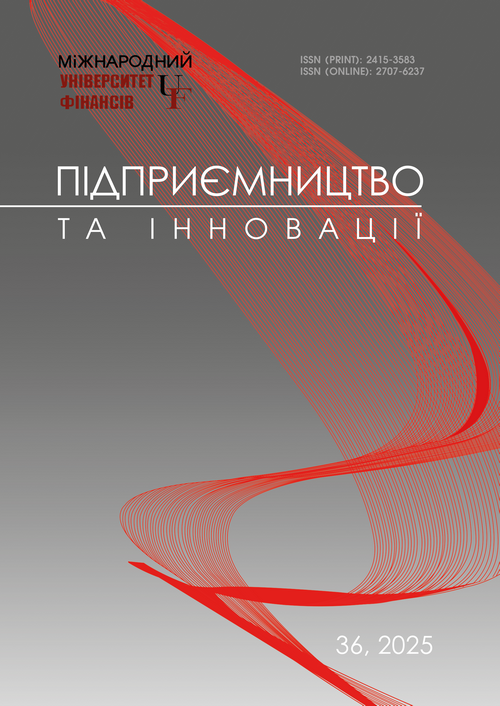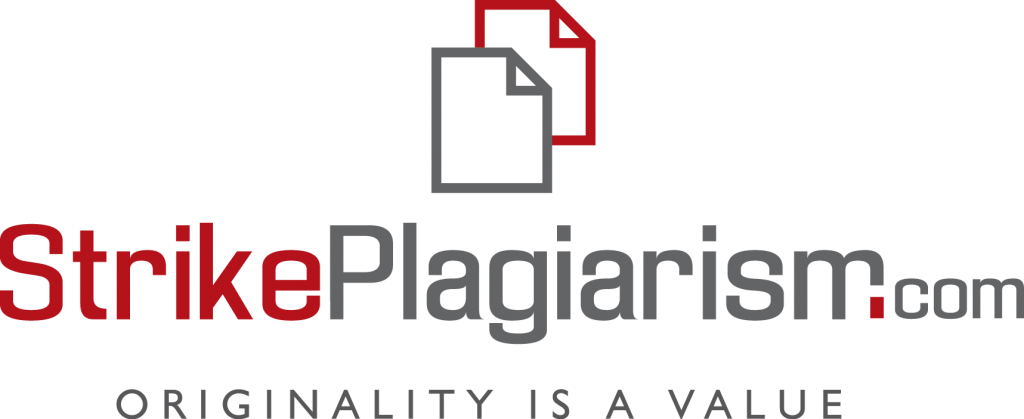CULTURAL INTELLIGENCE AS AN INNOVATIVE FACTOR IN MANAGING INTERCULTURAL TECHNICAL SUPPORT TEAMS IN AN INTERNATIONAL IT ENTERPRISE
Abstract
The article examines the conceptual foundations of cultural intelligence as an innovative factor in managing intercultural technical support teams in international IT enterprise. The relevance of the problem of effective cultural diversity management in the context of technological services globalization is substantiated, when teams are formed from specialists from different countries, cultures and time zones. The essence of cultural intelligence as a multidimensional competence is revealed, including motivational, cognitive, metacognitive and behavioral components, each of which plays a unique role in ensuring effective intercultural interaction. The specifics of technical support teams functioning are analyzed, which operate under constant pressure of time constraints, the need for immediate response to customer requests and ensuring high service standards, despite cultural, linguistic and communication barriers. The mechanisms of cultural intelligence impact at individual, group and organizational levels are investigated, manifested through improving the accuracy of customer request interpretation, enhancing communication between colleagues, forming synergy and trust in the team, as well as creating sustainable competitive advantages for the organization. A comprehensive model for cultural intelligence development is proposed, including the creation of culturally diverse project groups, implementation of mentoring systems, formation of knowledge base on cultural specifics of service, conducting adapted training and integration of cultural intelligence assessment into performance management systems. The necessity of organizational culture and leadership practices transformation, as well as strategic use of technological innovations to support cultural intelligence development is substantiated. Practical recommendations for implementing the proposed model in international IT companies activities are formulated and promising directions for further research in this field are identified.
References
очарова Н. А., Яровий І. О. Значення людських ресурсів у мультикультурному організаційному контексті: аналіз, виклики та перспективи. Економіка транспортного комплексу. 2024. № 43. С. 31–46.
Калініченко О. О., Мосійчук І. В., Пойта І. О. Управління проєктами у глобальному контексті: культурні аспекти та адаптація. Проблеми економіки. 2023. № 56. С. 24–30. URL: http://eprints.zu.edu.ua/37797/1/Мосійчук.pdf
Стукало Н. та ін. "Зелена" економіка: від глобальної концепції до реальності місцевого розвитку: монографія. Дніпро, 2018. DOI: https://doi.org/10.5281/zenodo.1294013
Харечко В. М. Культура, цінності та економічний розвиток: аналіз деяких концепцій. Наукові записки [Української академії друкарства]. 2018. № 1. С. 144–153. URL: http://nz.uad.lviv.ua/static/media/1-56/17.pdf
Adula M., Kant S., Birbirsa Z. A. Systematic Literature Review on Human Resource Management Effect on Organization Performance. Annals of Human Resource Management Research. 2022. № 2(2). Р. 131–146.
Agusta N. F., Azmy A. Servant Leadership and Career Development: Supporting Employee Growth. International Journal of Multicultural and Multireligious Understanding. 2023. № 10(12). Р. 350–360.
Agustian K., Pohan A., Zen A., Wiwin W., Malik A. J. Human resource management strategies in achieving competitive advantage in business administration. Journal of Contemporary Administration and Management (ADMAN). 2023. № 1(2). Р. 108–117.
Andreescu D. Cultural Heritage through Design Thinking. Scientific view on the modern problems of cultural heritage and arts in the context of social development: Collection of Scientific Articles. Klironomy Journal. 2021. № 1(1).
Chen T., Wu Z. How to facilitate employees' green behavior? The joint role of green human resource management practice and green transformational leadership. Frontiers in psychology. 2022. № 13. Р. 1–11.
De Bono E. Lateral thinking: A textbook of creativity. Penguin UK, 2009. 272 р.
Dedhia N. S. Six sigma basics. Total Quality Management & Business Excellence. 2005. № 16(5). Р. 567–574.
Desai D. A. Improving Profitability through Value Engineering: A Case study. Asian Journal of Engineering and Applied Technology. 2012. № 1(1). Р. 22–30.
Gadzali S. S., Gazalin J., Sutrisno S., Prasetya Y. B., Ausat A. M. A. Human resource management strategy in organisational digital transformation. Jurnal Minfo Polgan. 2023. № 12(1). Р. 760–770.
Gdoura I. A., Trabelsi K. The Impact of Human Resource Management Quality on Work Life Quality through The Moderating Role of Organizational Justice: The Case Study of the Expatriate Employees. Global Journal of Human Resource Management. 2024. № 12(3). Р. 15–29.
Hidayat W. G. P. A. Innovation in Human Resource Management to Create a Better Work Environment and Contribute to Organizational Success: A Systematic Literature Review. Open Access Indonesia Journal of Social Sciences. 2023. № 6(6). Р. 1176–1184.
Jurásek M., Wawrosz P. The Relationship between Cultural Intelligence and Cross-cultural Adjustment. Periodica Polytechnica Social and Management Sciences. 2024. № 32(2). Р. 192–204.
Karkovska V., Dorosh I. Modern leadership: features, requirements, problems and mistakes. State and Regions. Series: Economics and Business. 2019. № 5(110). DOI: https://doi.org/10.32840/1814-1161/2019-5-18
Leung A. K., Maddux W. W., Galinsky A. D., Chiu C. Multicultural experience enhances creativity: The when and how. American Psychologist. 2008. № 63(3). Р. 169–181. DOI: https://doi.org/10.1037/0003-066x.63.3.169
Lloyd S., Härtel C. Intercultural competencies for culturally diverse work teams. Journal of Managerial Psychology. 2010. № 25(8). Р. 845–875. DOI: https://doi.org/10.1108/02683941011089125
Shafaei A., Nejat M. Green human resource management and employee innovative behaviour: does inclusive leadership play a role?. Personnel Review, (ahead-of-print). 2023.
Terrien O. A Lean Engineering Journey. In INCOSE International Symposium. 2013. Vol. 23. № 1. Р. 16–31.
Wilson C. Brainstorming and beyond: a user-centered design method. Newnes, 2013. 75 р.
Bocharova, N. A., & Yarovyi, I. O. (2024). Znachennia liudskykh resursiv u multykulturnomu orhanizatsiinomu konteksti: analiz, vyklyky ta perspektyvy [The importance of human resources in a multicultural organizational context: analysis, challenges and prospects]. Ekonomika transportnoho kompleksu, no. 43, pp. 31–46.
Kalinichenko, O. O., Mosiichuk, I. V., & Poita, I. O. (2023). Upravlinnia proiektamy u hlobalnomu konteksti: kulturni aspekty ta adaptatsiia [Project management in a global context: cultural aspects and adaptation]. Problemy ekonomiky, no. 56, pp. 24–30. Available at: http://eprints.zu.edu.ua/37797/1/Мосійчук.pdf
Stukalo, N., et al. (2018). "Zelena" ekonomika: vid hlobalnoi kontseptsii do realnosti mistsevoho rozvytku ["Green" economy: from global concept to the reality of local development] [Monograph]. Dnipro. DOI: https://doi.org/10.5281/zenodo.1294013
Kharechko, V. M. (2018). Kultura, tsinnosti ta ekonomichnyi rozvytok: analiz deiakykh kontseptsii [Culture, values and economic development: analysis of some concepts]. Naukovi zapysky [Ukrainskoi akademii drukarstva], no. 1, pp. 144–153. Available at: http://nz.uad.lviv.ua/static/media/1-56/17.pdf
Adula, M., Kant, S., & Birbirsa, Z. A. (2022). Systematic Literature Review on Human Resource Management Effect on Organization Performance. Annals of Human Resource Management Research, 2(2), pp. 131–146.
Agusta, N. F., & Azmy, A. (2023). Servant Leadership and Career Development: Supporting Employee Growth. International Journal of Multicultural and Multireligious Understanding, 10(12), pp. 350–360.
Agustian, K., Pohan, A., Zen, A., Wiwin, W., & Malik, A. J. (2023). Human resource management strategies in achieving competitive advantage in business administration. Journal of Contemporary Administration and Management (ADMAN), 1(2), pp. 108–117.
Andreescu, D. (2021). Cultural Heritage through Design Thinking. Scientific view on the modern problems of cultural heritage and arts in the context of social development: Collection of Scientific Articles. Klironomy Journal, 1(1).
Chen, T., & Wu, Z. (2022). How to facilitate employees' green behavior? The joint role of green human resource management practice and green transformational leadership. Frontiers in psychology, 13, pp. 1–11.
De Bono, E. (2009). Lateral thinking: A textbook of creativity. Penguin UK.
Dedhia, N. S. (2005). Six sigma basics. Total Quality Management & Business Excellence, 16(5), pp. 567–574.
Desai, D. A. (2012). Improving Profitability through Value Engineering: A Case study. Asian Journal of Engineering and Applied Technology, 1(1), pp. 22–30.
Gadzali, S. S., Gazalin, J., Sutrisno, S., Prasetya, Y. B., & Ausat, A. M. A. (2023). Human resource management strategy in organisational digital transformation. Jurnal Minfo Polgan, 12(1), pp. 760–770.
Gdoura, I. A., & Trabelsi, K. (2024). The Impact of Human Resource Management Quality on Work Life Quality through The Moderating Role of Organizational Justice: The Case Study of the Expatriate Employees. Global Journal of Human Resource Management, 12(3), pp. 15–29.
Hidayat, W. G. P. A. (2023). Innovation in Human Resource Management to Create a Better Work Environment and Contribute to Organizational Success: A Systematic Literature Review. Open Access Indonesia Journal of Social Sciences, 6(6), pp. 1176–1184.
Jurásek, M., & Wawrosz, P. (2024). The Relationship between Cultural Intelligence and Cross-cultural Adjustment. Periodica Polytechnica Social and Management Sciences, 32(2), pp. 192–204.
Karkovska, V., & Dorosh, I. (2019). Modern leadership: features, requirements, problems and mistakes. State and Regions. Series: Economics and Business, no. 5(110). DOI: https://doi.org/10.32840/1814-1161/2019-5-18
Leung, A. K., Maddux, W. W., Galinsky, A. D., & Chiu, C. (2008). Multicultural experience enhances creativity: The when and how. American Psychologist, 63(3), pp. 169–181. DOI: https://doi.org/10.1037/0003-066x.63.3.169
Lloyd, S., & Härtel, C. (2010). Intercultural competencies for culturally diverse work teams. Journal of Managerial Psychology, 25(8), pp. 845–875. DOI: https://doi.org/10.1108/02683941011089125
Shafaei, A., & Nejat, M. (2023). Green human resource management and employee innovative behaviour: does inclusive leadership play a role?. Personnel Review, (ahead-of-print).
Terrien, O. (2013). A Lean Engineering Journey. In INCOSE International Symposium, Vol. 23, no. 1, pp. 16–31.
Wilson, C. (2013). Brainstorming and beyond: a user-centered design method. Newnes.



